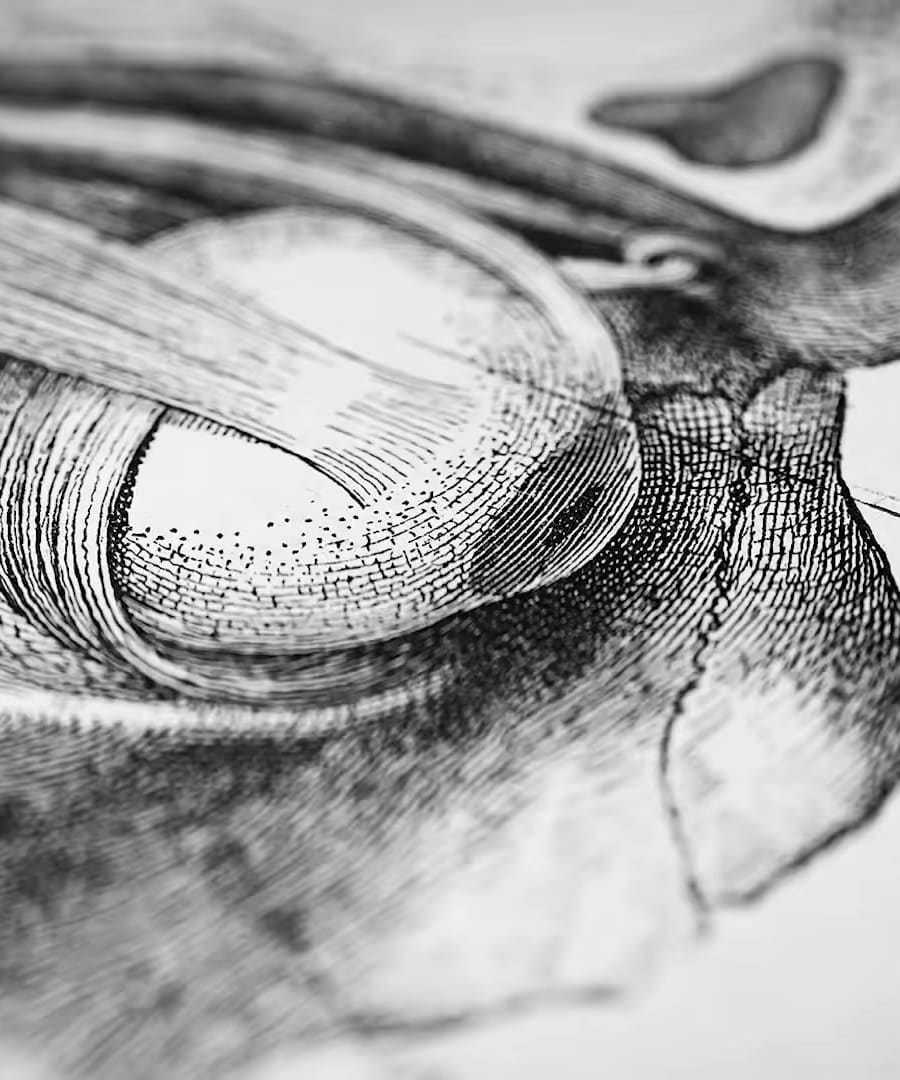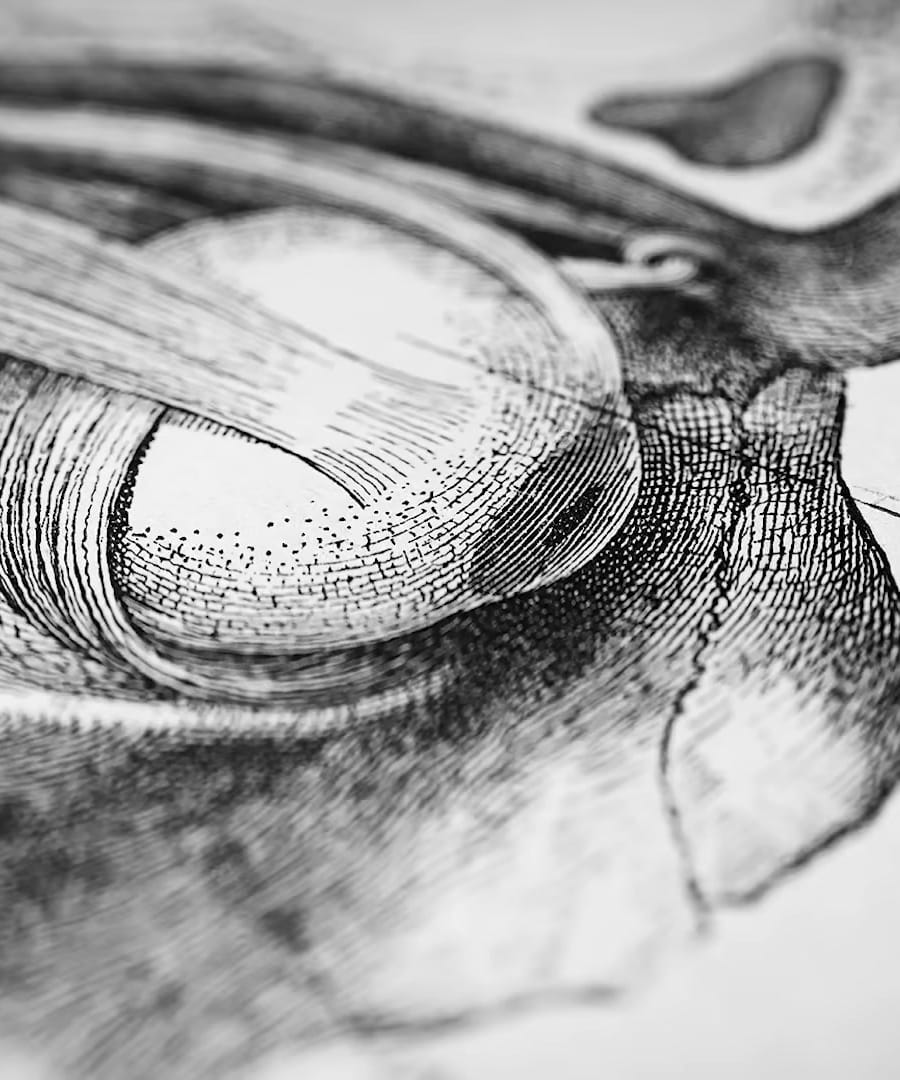How does Marijuana disrupt your sleep?
Sources:
Marijuana disrupts sleep in several significant ways:
-
REM Sleep Suppression: THC, the psychoactive component of marijuana, blocks REM sleep. This leads to fewer and less vivid dreams while using THC. Upon cessation, many experience a rebound effect, with intense and vivid dreams due to the accumulated REM sleep debt 1 2 3.
-
Sleep Architecture Disruption: Marijuana alters the natural pattern and depth of sleep. Although it can help users fall asleep faster, the sleep they get is often less restorative. This disruption affects the balance of slow-wave sleep early in the night and REM sleep later on 4 1.
-
Dependency and Withdrawal: Regular use of THC can lead to dependency, and upon stopping, users may experience severe insomnia as a withdrawal symptom. This withdrawal insomnia is a primary reason many relapse into using marijuana 1 5.
-
Short-term Memory Impact: Indica strains of cannabis, sometimes used to promote sleep, can impair short-term memory. This suppression of the hippocampus affects memory consolidation during sleep 6.
In summary, while THC in marijuana might help some individuals fall asleep faster, it disrupts the overall quality of sleep, especially REM sleep, and can lead to dependency and severe withdrawal symptoms related to insomnia.
RELATED QUESTIONS-
example of a circadian rythme
Sources:
A circadian rhythm is a 24-hour cycle that regulates various physiological processes, including sleep-wake patterns. Here is an example and a detailed explanation:
Circadian Rhythm Example
Dr. Matthew Walker explains that our circadian rhythm is controlled by a master clock in the brain called the suprachiasmatic nucleus. This clock orchestrates daily cycles of activity and rest, aligning our body's functions with the day-night cycle. This rhythmic cycle is why we feel awake during the day and sleepy at night 1.
Similarly, describes the body's circadian clock as a 24-hour timer in every cell, synchronized to the light-dark cycle. Morning light exposure, in particular, helps set this clock, ensuring our internal processes are in sync with the external environment 2.
These rhythms ensure that our physiological activities, such as hormone release, metabolism, and sleep cycles, occur at optimal times, enhancing overall health and well-being.
RELATED QUESTIONShow much salt intake per day
Sources:
provides insight into daily salt intake, emphasizing the importance of context based on health conditions and lifestyle needs. Here are the key recommendations:
-
General Guidelines: For most people, a daily salt intake of 8 to 12 grams is recommended, translating to 3.2 to 4.8 grams of sodium. This is higher than the typical recommendation of 2.3 grams of sodium per day. These amounts correspond to 1.5 to 2 teaspoons of salt per day 1.
-
Special Conditions: People with conditions like prehypertension, hypertension, or specific disorders such as orthostatic hypotension and POTS may need different intake levels. For example, those with orthostatic disorders are often advised to consume 6 to 10 grams of salt per day, equal to 2.4 to 4 grams of sodium 2.
-
Importance of Fluids: It's crucial to drink enough fluids, primarily water, to balance higher salt intake, as excessive storage of sodium in the body isn’t healthy 3.
recommends considering individual factors like diet, activity level, and specific health conditions when deciding on the optimal salt intake. Always consult with a healthcare provider to tailor these guidelines to your specific needs.
RELATED QUESTIONS-
How about salt intake for athletes?
Sources:
Athletes may have different salt intake needs compared to the general population due to their increased levels of physical activity and sweating. Here are the key points regarding salt intake for athletes from :
-
Increased Need Due to Sweating: Athletes lose more sodium through sweat, especially during prolonged exercise or in hot environments. This loss needs to be replenished to maintain performance and prevent issues like dehydration and cramping 1 2.
-
General Recommendations: For athletes, salt intake can go up to 7.5 to 10 grams per day (about 3 to 4 grams of sodium). This is significantly higher than the general recommendation and helps to compensate for sodium loss during intense physical activities 3 4.
-
During Exercise: It is often cited that consuming around 300 milligrams of salt during long bouts of exercise, particularly in hot and humid conditions, can be beneficial. This strategy helps maintain electrolyte balance and hydration levels 2.
-
Fluid and Electrolyte Balance: Proper hydration is crucial. Athletes should consume enough fluids, primarily water, to balance their salt intake. Monitoring body weight loss during exercise can help determine fluid needs, aiming to limit dehydration to less than 1% of body weight 1 5.
-
Recovery: Post-exercise recovery strategies should include fluid and salt replenishment. This process helps to stabilize body functions and prevent delayed onset muscle soreness or dehydration-related issues 2.
Athletes should tailor these guidelines to their individual needs and seek advice from healthcare professionals to optimize their salt and hydration strategies.
RELATED QUESTIONS-
were you trained on all huberman lab texts ?
Sources:
There is no direct information available from on whether he was trained on all texts related to Huberman Lab. However, you might find general discussions on training and improvement methods within the context of mental and physical performance interesting. For example, in the episode , talks about how mental training and visualization rely on neuroplasticity to improve learning across various domains 1.
If you need more specific details about training methods or protocols discussed by Dr. Huberman, I can assist you with that.
RELATED QUESTIONShow to fight acne
Sources:
To fight acne, suggests considering several dietary and lifestyle changes. Here are the key points mentioned in various clips:
Dietary Changes:
-
Whole Foods Diet:
-
Low Glycemic Diet:
-
Avoid Fried Foods:
- High-heat prepared foods like donuts and french fries are pro-inflammatory and can worsen acne. Reducing or eliminating these from the diet is recommended 2.
-
Dairy Intake:
- There is some evidence that nonfat and skim dairy products, typically containing emulsifiers to mimic the texture of full-fat dairy, can flare up acne. In contrast, whole-fat dairy seems less problematic 4.
Lifestyle Recommendations:
-
Proper Cleansing:
- Use gentle, non-fragranced cleansers, and avoid over-cleansing, which can exacerbate acne by disrupting the skin’s microbiome. Washing the face two to three times a day with lukewarm water is recommended 5.
-
Salicylic Acid:
- This can reduce keratinocyte stickiness and therefore help prevent clogged pores. It should be applied on clean skin, using mild soap and lukewarm water 5.
-
Avoid Popping Pimples:
-
Gut Health:
- Maintaining gut health through sufficient intake of fiber (prebiotic and probiotic) and low-sugar fermented foods can be beneficial for skin appearance and overall health 2.
Implementing these dietary and lifestyle changes can collectively help in fighting acne and improving overall skin health. Always consider consulting with a healthcare professional or dermatologist for personalized advice.
RELATED QUESTIONS-
What skincare routine is best for acne?
Sources:
For an effective skincare routine to fight acne, and dermatologist offer the following recommendations:
Cleansing
-
Gentle Cleansing:
- Wash your face two to three times per day with a gentle, unscented, non-fragranced cleanser to avoid over-cleansing, which can disrupt the skin's microbiome and worsen acne 1.
- Use mild soap and lukewarm water to cleanse your skin. Avoid using extreme temperatures of water, especially hot water, as it can exacerbate acne by increasing inflammation 2.
-
Avoid Harsh Cleansers and Over-washing:
- Harsh cleansers can remove beneficial skin microbiota, leading to further infections or inflammation 2.
Moisturizing
- Choose the Right Moisturizer:
- Look for non-comedogenic moisturizers to avoid clogging pores. This is particularly necessary for those prone to acne 3.
- Types of moisturizers:
- Ointments: Best for dry or eczema-prone skin, but might be too greasy for acne-prone skin.
- Creams and Lotions: Suitable for acne-prone skin because they are lighter 3.
Regular Practices
-
Sleep and Stress Reduction:
- Ensure adequate sleep and manage stress as both factors significantly impact skin health and acne 2.
-
Nutritional Considerations:
- Maintain a diet low in high glycemic index foods and dairy (especially nonfat and skim varieties) and rich in whole foods to reduce inflammation and support better skin health 2.
-
Salicylic Acid:
- Consider using products containing salicylic acid to reduce keratinocyte stickiness, which helps prevent clogged pores. Always apply these products to clean skin 2.
By following these guidelines, you can develop a comprehensive skincare routine tailored to combat acne effectively. Always consult a healthcare professional for personalized advice.
RELATED QUESTIONS-
explain circadian rythm
Sources:
Circadian rhythms are 24-hour cycles in biological processes influenced primarily by light and darkness in the environment. Here's an overview of the core concepts described by and experts he has featured:
Central and Peripheral Clocks
- Main Clock: The circadian rhythm is governed by a master clock located in the brain's suprachiasmatic nucleus (SCN). This clock coordinates the body's daily cycle of wakefulness and sleep by sending signals throughout the body 1.
- Peripheral Clocks: Every cell in the body contains its own circadian clock, which is synchronized by the master clock. These peripheral clocks help regulate various functions like metabolism and hormone release 2.
Light's Role
- Entrainment: Light, especially sunlight, is the primary cue for setting and maintaining the circadian rhythms. Exposure to sunlight reduces melatonin production, a hormone that promotes sleep, thereby signaling the body to wake up 2 3.
- Melatonin: Melatonin levels increase in the absence of light, which promotes sleepiness. Conversely, light exposure at night can disrupt this process, reducing sleep quality 2.
Sleep Pressure
- Adenosine: Alongside the circadian rhythm, sleep pressure builds up due to the accumulation of a chemical called adenosine. From the moment you wake up, adenosine accumulates, increasing your need for sleep as the day progresses 1.
Daily Rhythms and Health
- Mood and Mental Health: Proper alignment of circadian rhythms is crucial for mental health. Disruptions can lead to mood disorders and other psychiatric issues. For example, circadian rhythm disruption is often observed in the days leading up to severe mental health crises 4.
- Seasonal Variations: Circadian rhythms also respond to seasonal changes in daylight. For instance, longer daylight hours in summer result in shorter periods of melatonin production, leading to more energy, while shorter daylight hours in winter result in longer melatonin production periods, often leading to less energy and lower mood 2.
Practical Tips
- Morning Light: Viewing sunlight early in the morning can enhance the natural circadian rhythm, boosting morning cortisol levels and improving overall wakefulness 4.
- Consistent Schedule: Maintaining a regular schedule for sleeping and waking helps keep circadian rhythms aligned, promoting better sleep and overall well-being 3.
Understanding and aligning with your circadian rhythms can improve not only your sleep but also your overall health and mood.
RELATED QUESTIONSmdma effects
Sources:
MDMA (3,4-Methylenedioxymethamphetamine), often referred to as ecstasy, has various unique effects on the brain and body. Below are key points from and the :
Neurochemical Effects
- Dopamine and Serotonin: MDMA significantly increases both dopamine and serotonin levels. While dopamine elevates mood and stimulates activity, serotonin enhances social connectivity and emotional empathy. This combined effect leads to heightened mood, energy, and social bonding 1 2.
Psychological and Therapeutic Effects
- Empathy and Social Connectivity: MDMA is known for its empathogenic properties. Users often report increased empathy, not just towards others but also towards themselves. This makes MDMA particularly effective in therapeutic settings, especially for conditions like PTSD, where it can help patients feel more connected and less threatened by their traumatic memories 3 4.
- Mood Elevation: The drug induces a state of increased positivity and reduced fear response to stimuli that would typically be threatening. This effect can persist even after the drug has worn off, impacting the brain's threat detection and memory systems in a long-lasting way 4.
Neural Mechanisms
- Functional Connectivity: Unlike classic psychedelics, MDMA does not increase lateral connectivity in the neocortex but rather alters resting-state functional connectivity within the limbic system. This change is associated with reduced activity in threat detection centers of the brain like the amygdala and hippocampus 4.
- Specific Receptor Action: The effects of MDMA are largely due to its action on specific serotonin receptors, particularly the serotonin 1B receptor in the nucleus accumbens, a brain area involved in reward processing. This polypharmacology—simultaneous action on multiple systems—creates its unique therapeutic and empathogenic effects 5.
Safety and Risks
- Neurotoxicity: The risk of neurotoxicity from MDMA is lower than once believed, provided it is pure and used in controlled settings. However, high doses, frequent use, and certain environmental conditions like high temperatures can increase neurotoxicity risks. The environment where MDMA is taken can greatly influence its safety profile 6.
- Cognitive Effects: Long-term or high dose use can potentially lead to mild cognitive deficits. It's crucial to ensure a safe setting and avoid combining MDMA with other neurotoxic substances 7.
Additional Considerations
- Oxytocin: While MDMA also increases oxytocin levels, which is associated with bonding, this might not significantly contribute to its main effects of sociability and empathy. The serotonin-dopamine interaction primarily drives these effects 2.
MDMA's unique profile combines serotonin-driven emotional warmth and dopamine-driven energy, making it a powerful tool in therapeutic settings, especially for disorders like PTSD. However, its use must be carefully managed to minimize risks.
RELATED QUESTIONSmdma and caffeine
Sources:
Combining MDMA with caffeine can be particularly risky, as highlighted by in the :
-
Increased Neurotoxicity: MDMA is known to significantly increase dopamine and serotonin levels. Caffeine, on the other hand, upregulates dopamine receptors (D2 and D3). When taken together, caffeine enhances the effects of MDMA on these receptors, leading to increased neurotoxicity. This combination can be particularly harmful because the upregulated receptors can amplify MDMA's effects, contributing to potential neuronal damage 1.
-
Animal Studies: Research on animals supports the idea that caffeine can heighten MDMA's toxicity. These studies have shown that combining caffeine with MDMA can lead to further depletion of serotonin and dopamine in the brain, increasing the risk of neurotoxic effects 2.
-
General Advice: specifically advises against the use of caffeine in conjunction with MDMA due to these potential risks. Although caffeine can occasionally protect dopamine neurons on its own, its interaction with MDMA poses significant dangers 3 4.
In summary, combining caffeine with MDMA increases the risk of neurotoxicity, making this combination particularly unsafe.
RELATED QUESTIONS-
What are the risks of MDMA?
Sources:
MDMA (3,4-methylenedioxymethamphetamine) carries several risks as outlined by on the . Here are some key points regarding its risks:
-
Neurotoxicity: MDMA can increase both dopamine and serotonin levels to a high degree, which can potentially be neurotoxic. High releases of these neurotransmitters can promote electrical activity in other neurons, sometimes leading to neuron damage or death 1.
-
Environmental and Behavioral Factors: The risk of neurotoxicity increases if MDMA is taken in environments where blood pressure or body temperature can rise significantly, such as raves. High body temperature can exacerbate neurotoxic effects 2.
-
Interaction with Other Substances: Combining MDMA with other substances like caffeine can increase its neurotoxicity. Animal studies suggest that such combinations are particularly harmful, leading to further depletion of serotonin and dopamine 3 4.
-
Contamination: Recreational MDMA is often contaminated with other dangerous substances, such as fentanyl, which can be deadly. Ensuring the purity of MDMA is crucial to avoid these risks 1 5.
-
Post-MDMA Crash: After the effects of MDMA wear off, users often experience a "crash" marked by low mood, lethargy, and lack of motivation. This crash is partly due to a spike in prolactin levels, a hormone that increases in response to MDMA use, leading to these negative aftereffects 6 7.
-
Legal Status: MDMA remains a Schedule I drug, meaning it's illegal to possess or sell without special permissions for clinical research. The debate over its potential legalization for medical treatments, such as PTSD and addiction, is ongoing 8.
In summary, MDMA carries significant risks related to neurotoxicity, contamination, and the post-use crash. Its safety is influenced by factors such as dosage, environmental conditions, and concurrent substance use.
RELATED QUESTIONS-
How does Marijuana disrupt your sleep?
- RELATED QUESTIONS
example of a circadian rythme
- RELATED QUESTIONS
how much salt intake per day
- RELATED QUESTIONS
How about salt intake for athletes?
- RELATED QUESTIONS
were you trained on all huberman lab texts ?
- RELATED QUESTIONS
how to fight acne
- RELATED QUESTIONS
What skincare routine is best for acne?
- RELATED QUESTIONS
explain circadian rythm
- RELATED QUESTIONS
mdma effects
- RELATED QUESTIONS
mdma and caffeine
- RELATED QUESTIONS
What are the risks of MDMA?
- RELATED QUESTIONS









































